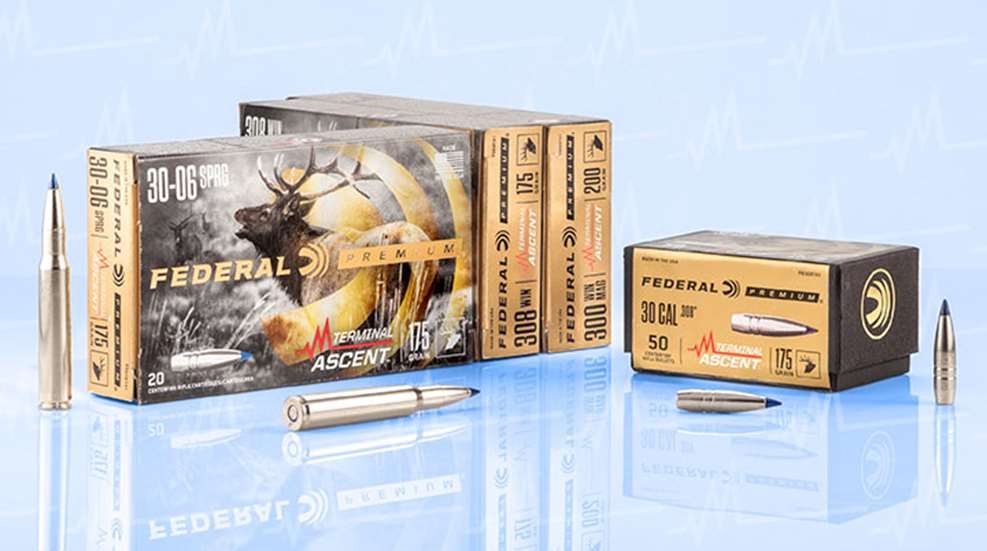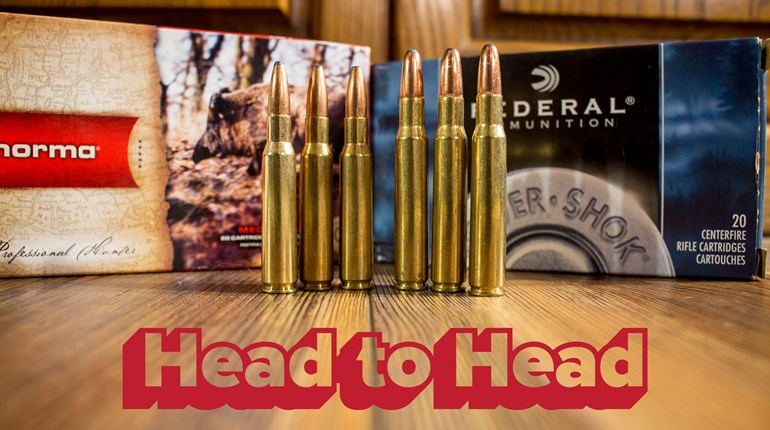
If you trace the genealogy of successful bullet designs, Jack Carter’s Trophy Bonded Bear Claw and its offspring stand out as one of the most successful families of projectiles ever developed.
Using a short lead core at the nose, chemically bonded to the copper jacket which transitions into a copper shank at the rear, the Trophy Bonded Bear Claw gives that unique blend of expansion and penetration that hunters have come to rely upon. No, its ballistic coefficient (BC) is not the highest, and it may not deliver the flattest trajectory when compared to modern designs, but for large and dangerous beasties it still works wonders.
That Bear Claw bullet, still in production from Federal, evolved into the Trophy Bonded Tip (TBT), a nickel-plated boat tail with a polymer tip that may be one of the most overlooked bullets on the market. It hits very hard, flies flat and gives astounding terminal performance at traditional hunting ranges; it is a bullet I’ve happily used all over North America and Africa.
The TBT made the transition to the Edge TLR—similar, yet truly a modern bullet with a higher BC sporting a blue SlipStream polymer tip and black-nickel finish to set it apart. It was both wonderfully accurate and terminally effective, even out past the 1,000-yard mark. But, the engineers at Federal weren’t done.
Federal announced the release of its Terminal Ascent (TA) line of loaded ammunition and component projectiles for 2020, improving on the Edge TLR design. Testing the terminal potential of TA, the folks at Federal have found that the bullet will reliably expand at velocities as low as 1500 fps. This is not just a cosmetic upgrade to the previous bullets; TA has been seriously re-engineered to be the best bullet, for all situations, that will give the best terminal performance available, whether at minimal velocity a long, long way from the muzzle, or loaded in a magnum cartridge with shot distances better measured in feet.
Federal tells us the TA is a match-grade hunting bullet. That claim may be difficult to prove, especially in loaded ammunition, but as the TA is also available as a component, the projectiles can be measured for length and weight, to give a pretty good idea of uniformity. I have spent some time with TA component bullets in 7mm and .30 caliber, and I can happily report that they do, in fact, possess the uniformity of a match bullet. Weighing these component bullets, I found an extreme spread of .3 grains; I’ve seen greater variations in some runs of match bullets. In my handloads the accuracy was certainly there, as some of my pre-existing recipes for bullets of these calibers were quickly printing sub-MOA groups. (I loved the TA’s accuracy in my .280 Ackley Improved and my beloved .300 Winchester Magnum.)
I can report that the TA loaded ammo I tested (the 175-grain .30-06 Sprg., and the 155-grain .280 Ack. Imp.) gave equally impressive group sizes. Loaded in Federal’s nickel cases, with a weatherproof primer sealant, the ammunition was not only accurate, but offered both smooth feeding and easy extraction. I tested the .30-06 in an older Ruger 77 which happens to shoot rather well, and the 24-inch barrel gave muzzle velocities averaging 2712 fps—just a bit slower than the advertised 2730 fps–and printed three-shot groups measuring just over .8 inch. The 155-grain .280 Ack. Imp. load—shot with a Savage 110 Long Range Hunter rifle with a 26-inch barrel—printed groups just a bit larger, averaging .89 inch.
The secant ogive of the TA bullet is skived on the exterior for reliable expansion at a wide range of impact velocities. The SlipStream polymer tip is highly heat-resistant, and like so many other designs, is used to initiate expansion. The shank of the bullet has several grooves—Federal calls them the AccuChannel grooves—which reduce the bearing surface on the rifling and reduce fouling inside your barrel. Federal has spent considerable time configuring the placement and size of these grooves for each bullet; the bullet’s length, weight, center of gravity, and amount and location of the grooves all play a part in the accuracy/energy-retention formula. Even the groove itself is an engineering marvel; the sloping rear wall allows air to easily flow in and out during flight, reducing drag downrange. The nickel finish is corrosion-resistant for a uniform bearing surface no matter the environment. When you use a TA load, you are using what may be the optimum scientific blend of interior, exterior and terminal ballistics.
So, what we have in the TA is the following: a bullet capable of excellent accuracy, with a great BC aiding in both a flat trajectory and high retained energy, with a bonded core to ensure structural integrity during the terminal phase. Terminal Ascent is one of the most versatile designs on the market for an all-around cartridge. It is a big game bullet, not quite perfect for varmints and furbearers, nor a good choice for the true heavyweight dangerous animals, but is a contender for the top of the heap for deer, antelope, pigs, elk, moose, bear and caribou. Weight retention runs in the 90th percentile, and with that lead core located at the front of the bullet, straight-line penetration is a regular occurrence.
I am an unabashed fan of many different bullet designs, available in both factory-loaded and component form, but I am confident saying that Federal’s new Terminal Ascent is going to be joining me on many adventures in the upcoming seasons.

Technical Specifications
• Caliber: 6.5 Creedmoor (130-gr.), 6.5 PRC (130-gr.), .270 Win. (136-gr.), .270 WSM (136-gr.), .280 Ack. Imp. (155-gr.) (tested), .28 Nosler (155-gr.), 7mm Rem. Mag. (155-gr.), .308 Win. (175-gr.), .30-06 Sprg. (175-gr.) (tested), .300 Win. Mag. (200-gr.), .300 WSM (200-gr.)
• Bullet: copper shank and bonded lead core, nickel plated, Slipstream polymer tipped Federal Premium Terminal Ascent
• Ballistic Coefficient: .610 (.280 Ack. Imp.), .536 (.30-06 Sprg.)
• Muzzle Velocity (adv. fps): 2930 (.280 Ack. Imp.), 2730 (.30-06 Sprg.)
• Muzzle Energy (adv ft.-lbs.): 2,954 (.280 Ack. Imp.), 2,896 (.30-06 Sprg.)
• Uses: medium to large big game (deer, bear, elk, hog, caribou)
• MSRP: $42.95-$53.95 per 20-rnd. box; federalpremium.com



































